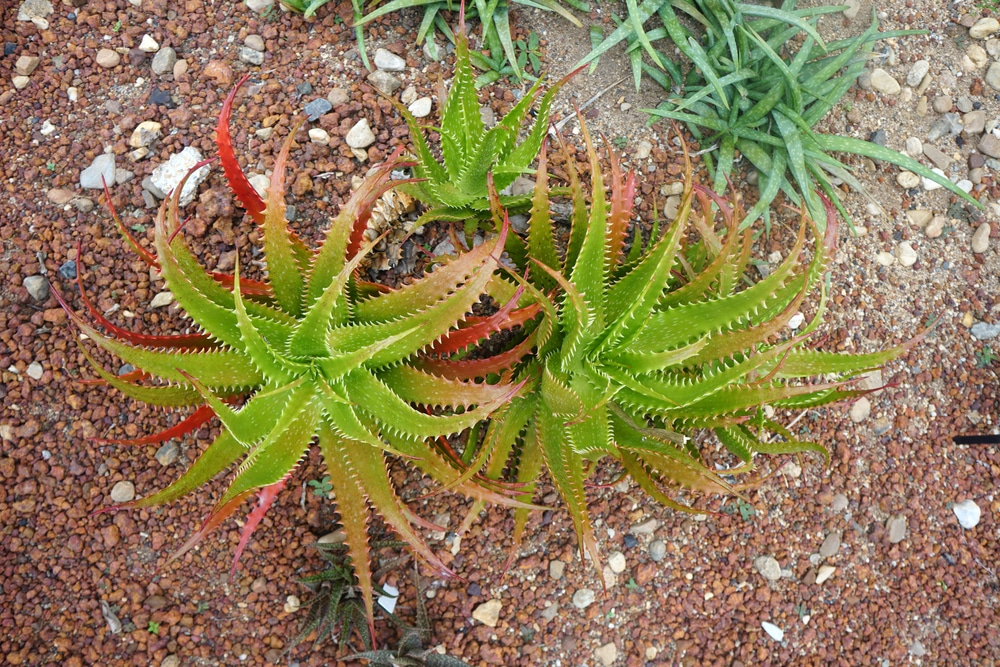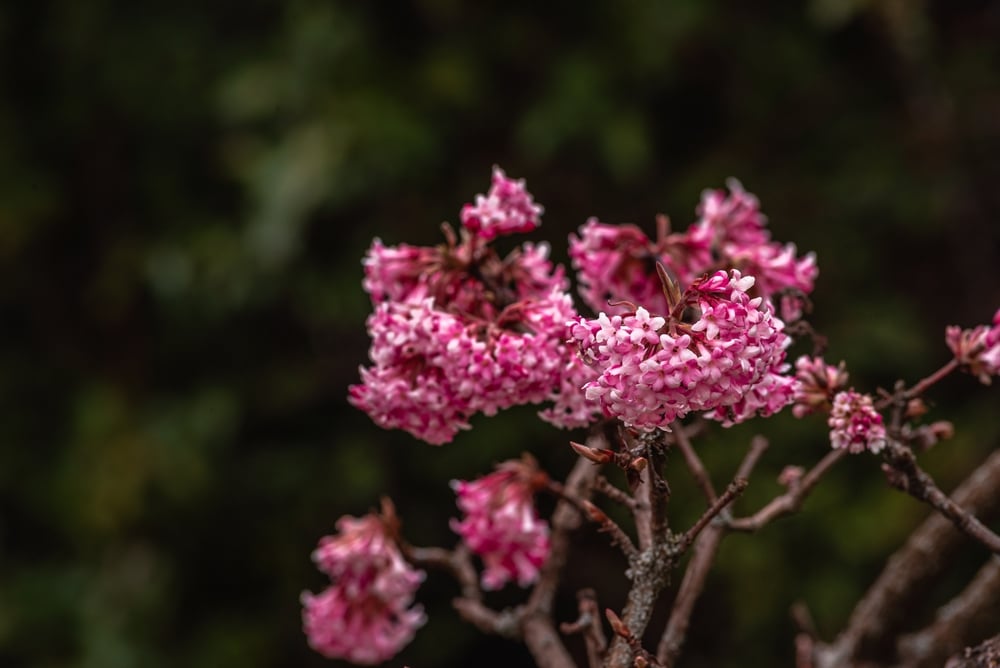Agaves are popular succulents grown for ornamentation and cultivation, especially the rare blue agave, from which tequila is made. Agaves are popular succulents in North America. However, they are also found in tropical South America and South Africa. Since there are many different species of agave plants, there are also many other plants that look like agave but are entirely different organisms.
Aloe

Aloe and agave are both succulents, meaning they do well in sandy, well-draining soil with minimal nutrients and little water. Aloe tends to have small spikes along its thick, juicy leaves, similar to agave. They are close in color, ranging from grayish green to bright green, and they both love the full sunlight.
If you’re unsure whether a plant is an agave or an aloe, you can break open a small part of a leaf. Aloe leaves are full of gel. This gel is where we get sun relief products made from aloe. Contrarily, agave leaves are full of fibers.
Dyckia
These spiky lovers of arid climates are native to Brazil and other high-altitude areas of South America. There are dozens and dozens of different species, but overall, dyckia resembles agave because it has long, spiky leaves that grow in a radially symmetrical pattern. They often have mottled purple and gray coloring, and some are completely purple.
Dyckia’s spikes are more spread out than those of agave, and often more noticeable. The primary difference is that agave plants can grow to be several feet in diameter, while dyckias only grow about eight inches across.
Pineapple Plant
Before growing the fruit, the pineapple plant bears a resemblance to agave. Its leaves are semi-succulent, which means they store moisture inside, but not as much as a plant like aloe or echeveria.
Pineapple leaves have serrations on the edges, identical to the leaves that grow on top of the pineapple fruit. However, pineapple plants in bloom are a sight to behold, turning red and pink with a vast conelike structure that holds more than a hundred tiny flowers.
Yucca
Both agave and yucca grow excellently in arid, dry climates with little rainfall and full sunlight. They are desert dwellers, and both are found all over the Southwestern United States. They are both members of the plant family Asparagaceae, and they thrive under similar conditions. However, although yucca is related to agave and looks a lot like it, agave’s sword-shaped leaves are wider, and they seem to have fewer leaves because of the larger leaf size.
Yucca leaves are also sword-shaped with small serrations, but they are narrower and make the plant appear more like a large spiky bush than a succulent. Agave has large yellow flowers when it blooms—yucca plants have white bell-shaped flowers.
Stonecrop
Stonecrop is an umbrella term containing over 400 separate species of plants from the genus Sedum. Sedum plants vaguely resemble young agave plants. They are succulents that grow in rosette clusters, but agave quickly surpasses these little leaf clusters in size, whereas sedums or stonecrops grow many more leaf clusters together in a group.
Stonecrop plants’ profusion of blooms is another factor besides size that differentiates these from agave plants. They bloom in the summer and fall and can have flowers of varying colors, including yellow, lilac, pink, red, and white. Agave flowers aren’t nearly so effusive or varying in color.
Plants That Look Like Agave: Final Thoughts
There are many species of agave, and there are many succulents and semi-succulents that look like any number of these different agave species. Most of them have spiky leaves.
Nonetheless, there will always be ways to differentiate them from each other. The most obvious is to compare flowers of each species, but unfortunately, the blooming season is short and we must rely on other criteria during other times of the year.


